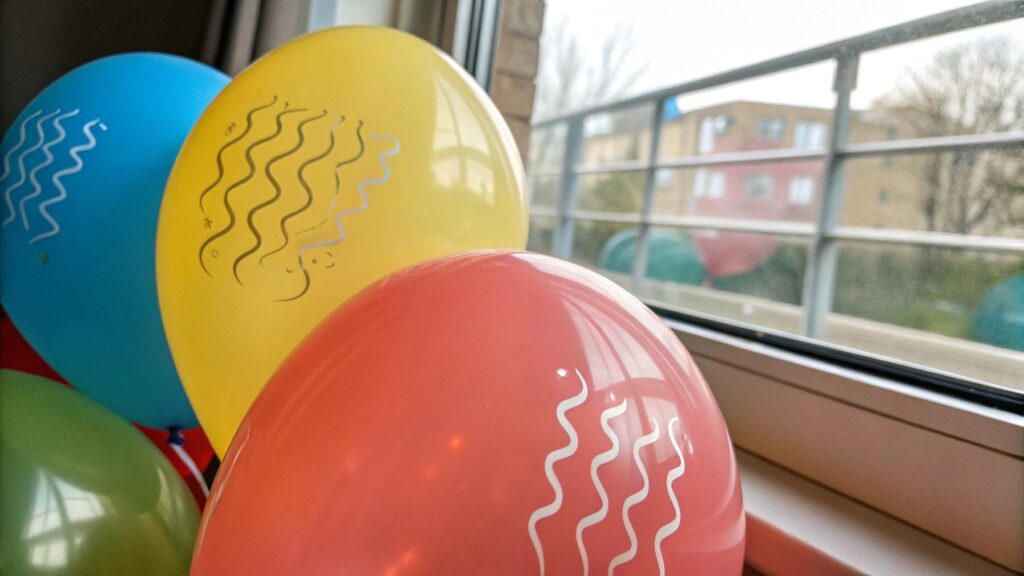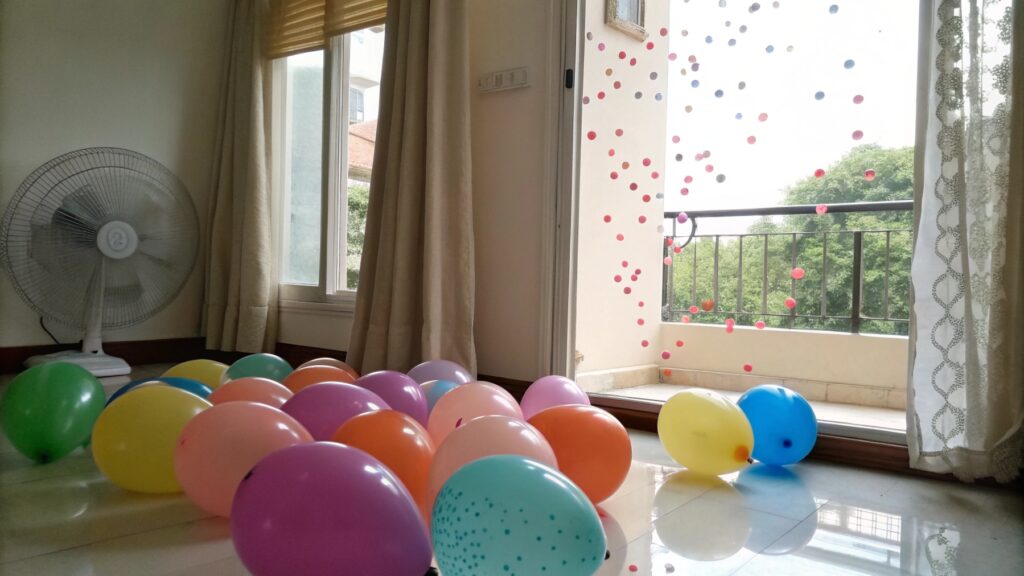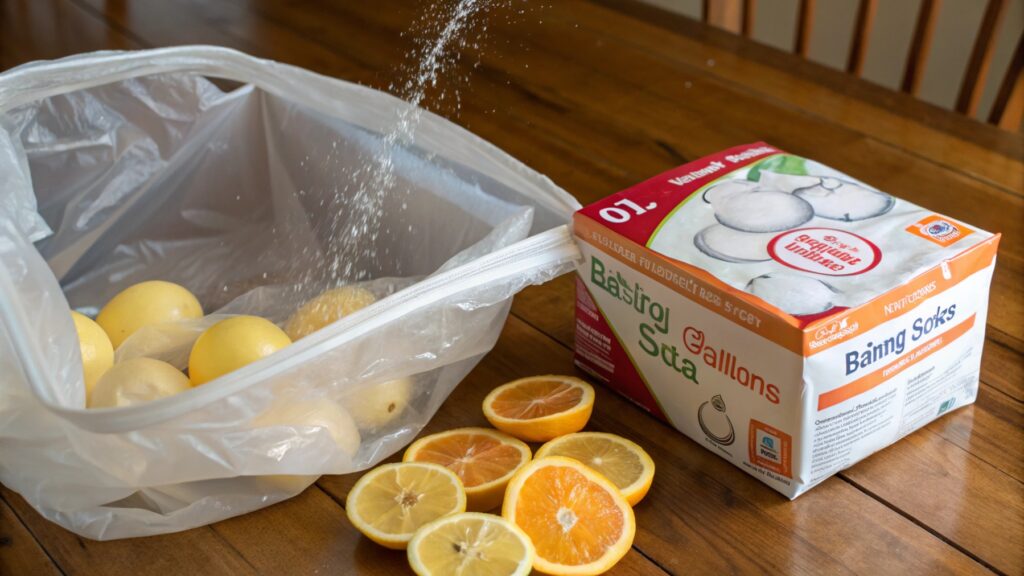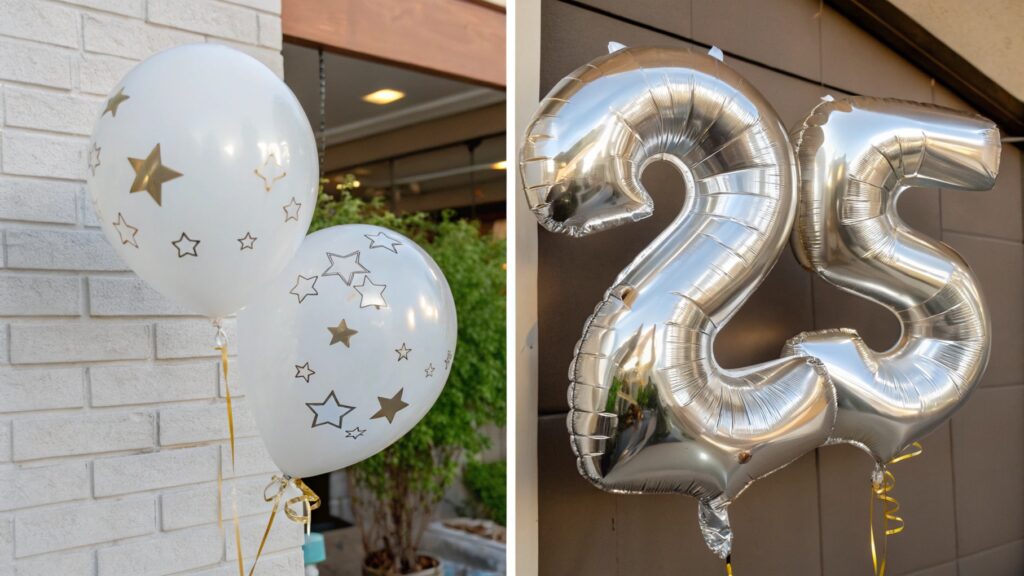How do you get rid of the rubber smell from latex balloons?
Do strong smells from new balloons bother you? That rubber odor can take away from the fun. Let me show you how to handle it.
You can reduce the rubber smell1 from latex balloons by airing them out in a well-ventilated area or by using mild neutralizing agents2 like baking soda. High-quality latex balloons typically have only a faint, natural rubber scent, unlike those made with poor-quality materials which can have a strong, irritating odor.

The rubber smell in latex balloons can be a real party pooper. But I have learned that the quality of the balloon greatly impacts this smell.
Why Do Latex Balloons Have a Strong Rubber Smell?
Does the smell of new balloons ever hit you hard? That strong rubber scent can be quite noticeable. It comes from how they are made.
The main reason latex balloons smell is because they are made mostly from natural latex. This material comes from rubber trees. It has a natural, distinct odor. Think of it like fresh wood having a wood smell.

I have seen many balloons in my career. The smell tells me a lot. The best latex balloons have only a very faint smell. It is not irritating. This means good quality raw materials were used. If a balloon has a strong, bad smell, it often means lower quality materials were used. Sometimes, other small ingredients are added to the latex. These can also add to the smell. It is like baking a cake. The main ingredients give the cake its main smell. But other small ingredients change it too.
Understanding the Source of the Smell
The smell in latex balloons comes from the natural latex itself. This is the main ingredient. It makes up most of the balloon. Other small things are added. These are like tiny helpers. They make the balloon strong or colorful.
| Component | Percentage (Approx.) | Purpose | Odor Contribution |
|---|---|---|---|
| Natural Latex | 90-95% | Main structure, elasticity | Primary source of natural rubber smell |
| Pigments | 1-3% | Color | Minimal, some artificial colors may have slight odor |
| Vulcanizing Agents | 1-2% | Strengthen rubber, prevent stickiness | Can contribute to chemical smell if low quality |
| Accelerators | <1% | Speed up vulcanization process | Minimal, but bad ones can add to bad smell |
| Stabilizers | <1% | Prevent degradation, extend shelf life | Generally odorless, but impurities can contribute |
I have seen that good factories use pure natural latex. This latex has a mild smell. It is not harsh. Bad factories might use latex that is not as pure. Or they might add cheap chemicals. These make the smell much stronger and worse. This is why I always check the smell. It is a good sign of quality.
What Are Quick Ways to Remove Rubber Odor from Balloons?
Does that new balloon smell bother you? You can get rid of it fast. There are simple ways to make them smell better.
The quickest way is to give them fresh air. Take the balloons out of their bag. Spread them out in a room. Make sure the room has good airflow. Open a window if you can. Let them sit there for a few hours. The fresh air helps carry the smell away. It is like airing out a new shirt.

I learned this trick early on. When I get new balloons, I always air them out. Especially if they are for a big event. I want them to smell fresh, not like a rubber factory. This step is important for quality control. It makes sure my clients get the best experience. Sometimes, if the smell is still there, I use a fan. I point the fan at the balloons. This makes the air move faster. It helps clear the smell even quicker. It is a simple but effective method.
Practical Steps for Odor Reduction
Airing out is the first step. But there are other tricks too. These help even more. They are simple things you can do at home.
| Method | Description | How It Works | Best For |
|---|---|---|---|
| Ventilation | Spread balloons in an open area with airflow. | Air currents carry away volatile odor molecules. | General reduction for large batches. |
| Baking Soda | Place balloons in a bag with baking soda3. | Baking soda absorbs odors. | Stronger smells, smaller quantities. |
| Activated Charcoal | Put charcoal near balloons in a container. | Charcoal has pores that trap odor particles. | Persistent odors, sensitive environments. |
| Fabric Softener Sheets | Lay sheets near uninflated balloons. | Imparts a pleasant scent, may help mask odor. | Masking mild residual smells, adding freshness. |
I have tried the baking soda trick myself. I put a few uninflated balloons in a bag. Then I add a small open box of baking soda. I seal the bag and leave it for a day. When I open it, the smell is much less. It works like magic. For really stubborn smells, I sometimes use a mix of these. I air them out first. Then I use baking soda or charcoal. It makes a big difference.
Can Natural Remedies Eliminate Latex Balloon Smells Effectively?
Do you want to get rid of balloon smells without chemicals? Natural remedies can help. They are safe and often work well.
Yes, natural remedies can reduce the smell. Baking soda is a great example. It absorbs odors. You can put uninflated balloons in a bag with an open box of baking soda. Leave it overnight. The baking soda will soak up the rubber smell. It is a simple and green way to freshen them.

I always prefer natural solutions when I can. Especially for things that will be around people. I have found that citrus peels can also help. I put orange or lemon peels near the balloons. The strong, fresh scent of the citrus can help mask and even reduce the rubber smell. It is like nature's air freshener. This method is great for smaller amounts of balloons. Or when you want a pleasant, natural aroma. I also make sure the peels do not touch the balloons directly. This avoids any stains.
Exploring Natural Odor Solutions
Natural ways are often gentler. They are also safer. Many things around your home can help.
| Natural Remedy | How to Use | Effectiveness Level | Considerations |
|---|---|---|---|
| Baking Soda | Place in a sealed container with balloons. | High | Requires overnight exposure. |
| Coffee Grounds | Put in an open bowl near balloons. | Medium-High | Can leave a coffee scent. |
| Activated Charcoal4 | Place in a breathable bag near balloons. | High | No scent added, good for sensitive noses. |
| Citrus Peels5 | Put in a small dish near balloons. | Medium | Adds a citrus scent, good for masking. |
| Vinegar | Place a small bowl of white vinegar nearby. | Medium | Can leave a slight vinegar smell initially. |
I have seen the power of activated charcoal. It is amazing how it pulls smells out of the air. I put some charcoal in a small mesh bag. Then I place it near the balloons. It works quietly and effectively. I often use this for balloons that need to be completely odor-free. It is a trusted method in my book. It does not add any new smell. This is good for people who are sensitive to scents.
Are There Latex Balloon Alternatives Without the Rubber Smell?
Do you dislike the rubber smell from balloons? There are other choices. Some balloons do not have that distinct odor.
Yes, there are alternatives. Foil balloons are a great choice. They are made from a thin metallic material. They do not have a rubber smell at all. These balloons come in many shapes and sizes. They are perfect if you want no smell.

I often recommend foil balloons for those who are sensitive to smells. Or for events where a neutral scent is important. For instance, in hospitals or places with strict air quality rules. I have seen them used for birthdays, anniversaries, and corporate events. They hold helium for a very long time. This is another big advantage. They also look very shiny and festive. They offer a different look than latex balloons. So they are not just an alternative for smell. They are also a different style choice.
Exploring Scent-Free Balloon Options
When smell is a concern, other materials are available. These offer different benefits too.
| Alternative Balloon Type | Material Composition | Odor Profile | Advantages | Disadvantages |
|---|---|---|---|---|
| Foil Balloons | Mylar (plastic coated with metal) | Odor-free | Long-lasting, wide variety of shapes | Not biodegradable, usually more costly |
| PVC Balloons6 | Polyvinyl Chloride (PVC) | Minimal, slight plastic odor | Durable, can be reused | Less flexible, heavier, environmental concerns |
| Nylon Balloons7 | Fabric (coated nylon) | Odor-free | Very durable, reusable | Higher cost, less common for small events |
I have explored all these options. Foil balloons are the most common alternative. They are everywhere. PVC balloons are also used. But usually for bigger, more durable inflatables. Like advertising blimps. Nylon balloons are often for very large, special displays. They are super strong. My main focus at AIHUA BALLOON is quality latex. I believe good latex should have a very mild smell. But knowing these alternatives is important. It helps me offer the best solutions. It fits different customer needs.
Conclusion
You can reduce balloon odors by airing them out or using natural absorbers. High-quality latex balloons have only a faint, natural smell. Always choose good materials for a better experience.
-
Explore this link to discover various methods for reducing the rubber smell from latex balloons, ensuring a more enjoyable experience. ↩
-
Find out about various neutralizing agents that can effectively combat unpleasant odors, including those from balloons. ↩
-
Explore how baking soda can effectively eliminate odors from balloons, making them fresh and pleasant for your events. ↩
-
Learn about the science behind activated charcoal and its effectiveness in odor removal, perfect for those sensitive to fragrances. ↩
-
Discover how citrus peels can enhance your home’s aroma naturally and effectively, making it a great alternative to synthetic air fresheners. ↩
-
Learn about PVC balloons, their durability, and how they compare to other options, helping you choose the right balloon for your needs. ↩
-
Discover the unique features of nylon balloons, their durability, and ideal applications for large displays or special events. ↩
